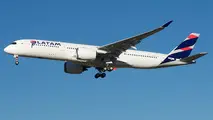LATAM Touts Ambitions For Brazil After It Pledges $2B Investment
TRINIDAD—Bolstering its position in Brazil is a major focus for LATAM Airlines Group, reflected in its decision to invest $2 billion in the country.

TRINIDAD—Bolstering its position in Brazil is a major focus for LATAM Airlines Group, reflected in its decision to invest $2 billion in the country.
“We have very ambitious plans in Brazil,” explained LATAM Airlines Colombia CEO Santiago Alvarez during the CAPA Airline Leader Summit Latin America & Caribbean here in Trinidad.
The investment was unveiled earlier this month with a focus on products, technologies and services for passengers and maintenance activities.
“Brazil right now is growing, and this is a moment where we should invest and try to capture the opportunity,” Alvarez stated.
LATAM’s significant investment in the country is also occurring as its Brazilian rival GOL Linhas Aereas restructures under U.S. Chapter 11 bankruptcy protection. GOL and fellow Brazilian carrier Azul recently launched a domestic codesharing agreement in the country. The initial rollout in July included 40 non-overlapping routes, with additional pairings added over the coming weeks.
Azul has also previously stated it is having “independent discussions” with GOL parent Abra Group to “explore possible opportunities.”
As Azul and GOL embark on a new partnership in Brazil, LATAM airlines at the end of the second quarter stated it was Brazil’s domestic leader with a 40% market share.
LATAM has also worked to strengthen its position in Colombia during the last few years, growing the number of aircraft operated by LATAM Airlines Colombia from 19 pre-pandemic to 30. Alvarez noted the growth has made the carrier both more relevant overall and more relevant with business passengers.
Two ULCCs—Viva and Ultra Air—exited the market last year, and Colombia’s largest airline, Avianca, and LATAM Airlines Colombia worked to fill the gap their exit created.
South American ultra-low-cost airline group JetSMART launched a domestic Colombian franchise in March, and Alvarez reiterated previous conclusions made by LATAM executives about market oversupply.
During the last six months the carrier has undertaken efforts “in terms of stimulating demand, and we’re seeing that the load factors are 78%-79% in the industry … it’s a clear message that there is an oversupply there in the market,” said Alvarez.
For the first half of this year, LATAM Colombia’s domestic passengers were up 19% year-over-year, and seats grew 22%, he added.



